Learn About Kusumba Mosque: A Historical Masterpiece in Naogaon
About Kusumba Mosque
Kusumba Mosque (Bangla: কুসুম্বা or কুশুম্বা মসজিদ) also known as Kushumba Shahi Masjid, is a historic monument located in Kusumba village of Manda Upazila in the Naogaon district, Bangladesh. The geo-location of the site is Latitude: 24°45’10.0″N, Longitude: 88°40’53.3″E. It is situated 33 km north of Naogaon district town and 3.4 km north of Manda Upazila town. This important national heritage site falls under the 8 no. Kusumba Union Parishad, the most local administrative level of the Bangladeshi government system. The Atrai river is on its north-east side. It is the second most important archaeological heritage site in Naogaon district, after Somapura Mahavihara of Badalgachhi. The mosque also called as as ‘The Black Gem of Bengal’, Besides, the mosque picture appears on the 5 taka note of Bangladesh.
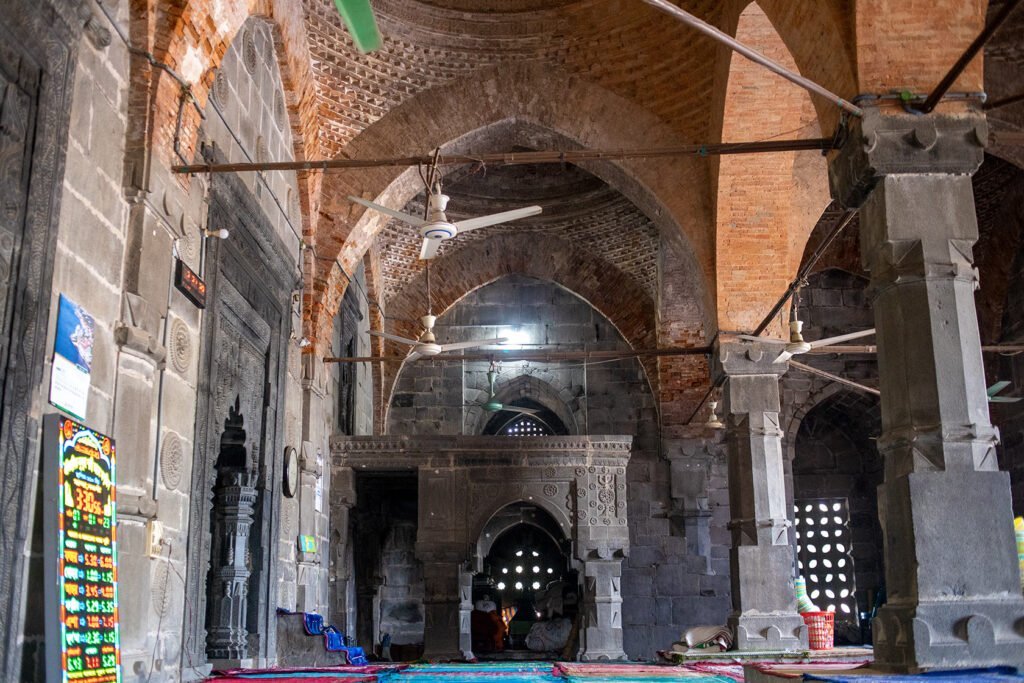
Construction History
A man named Sulaiman built this mosque during the reign of the Afghan ruler Ghiyas-ud-din Bahadur Shah, who belonged to the Shur dynasty. Furthermore, historical records suggest that Mr. Sulaiman, a senior official of Ghiyasuddin Bahadur Shah, was a converted Muslim. A plaque at the mosque’s entrance indicates its construction in 966 Hijri or 1558-1559 AD. Furthermore, it is also mentioned in history that the stones used in the mosque’s construction was taken from the ruins of a nearby Hindu temple.
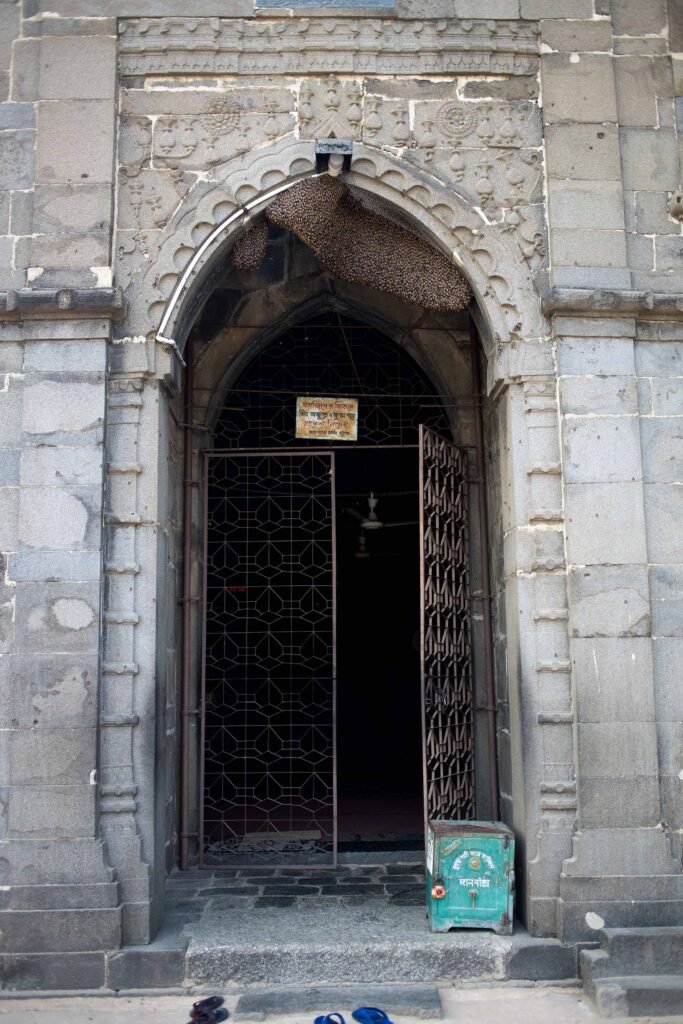
Construction Style
Regarded as a unique example of Muslim architecture, Kusumba Mosque also reflects the architectural style of North India. A courtyard surrounds the centrally located mosque. From a distance, the mosque appears black. Measuring 58 feet in length and 42 feet in width, the mosque boasts impressively thick walls that are 6 feet thick. The mosque’s structure, made of brick, features a covering of gray stone up to the pendentive arches on both the outer and inner walls. Consequently, the public considers it a stone mosque. The stones covering the walls are uneven. There are 6 domes on top of the mosque. In 1897, three domes were damaged by a terrible earthquake. Later, the Directorate of Archeology Department repaired them.
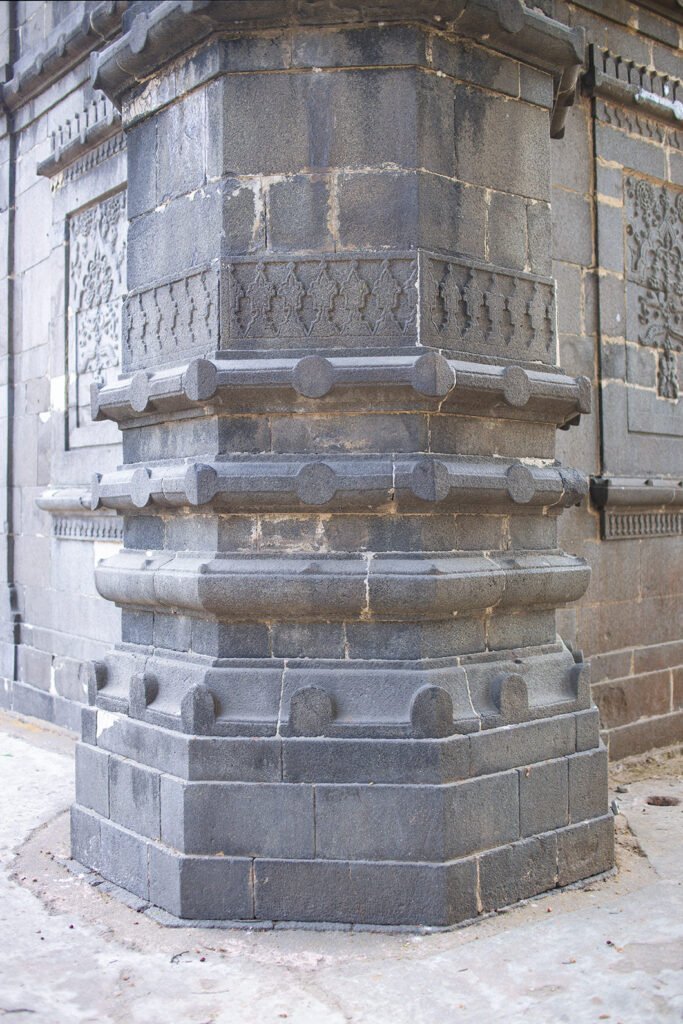
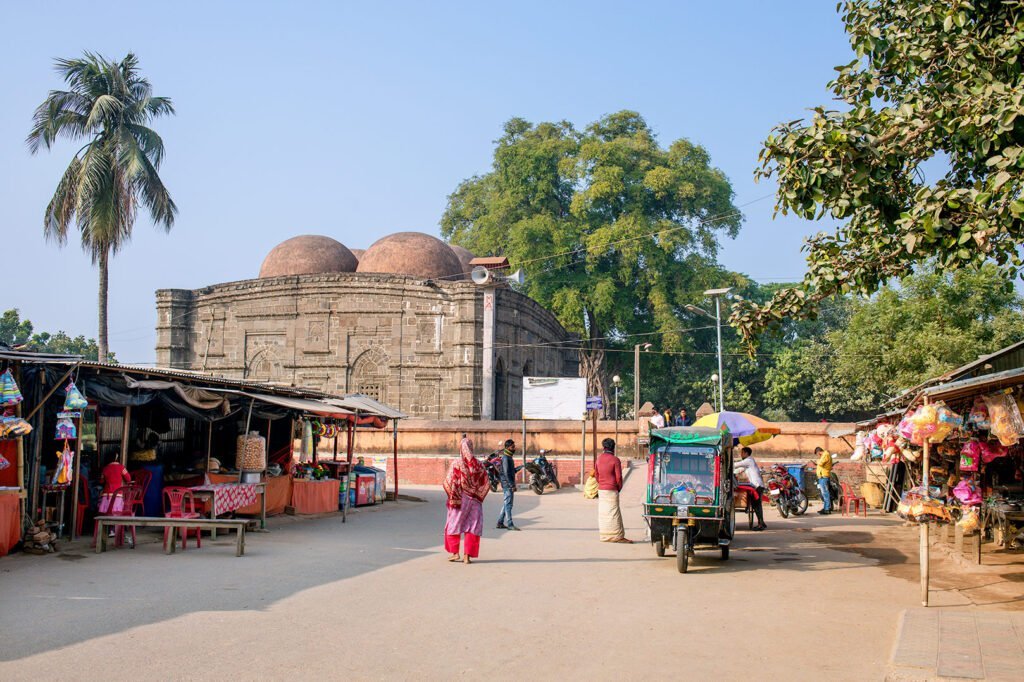
Artworks at Kusumba Mosque
Various designs and artworks adorn the front walls and entrance gates of the Kusumba Mosque. Along with the rose flower shape, leaf shape designs also appear. Small urns and rose designs fill the spandrels of the entrance arch. Four octagonal towers or turrets stand at the four corners of the mosque. In addition to this, the north and south walls of the mosque feature a total of four windows. These windows don’t have a closing features; instead, they feature stone grills that allow light and air to flow into the mosque.
The mosque features a total of three mihrabs, each adorned with intricate stone-carved artworks. Notably, these artworks include motifs of grapes and vines. People believe the largest mihrab served judicial purposes. To reach this mihrab, you’ll climb a stone-built staircase with 11 steps. Inside the mosque, two pillars stand. These pillars, along with the walls, hold up six domes. Furthermore, a boundary wall encloses the mosque.
All these construction techniques and artworks bear the characteristics of Islamic architecture of that time.
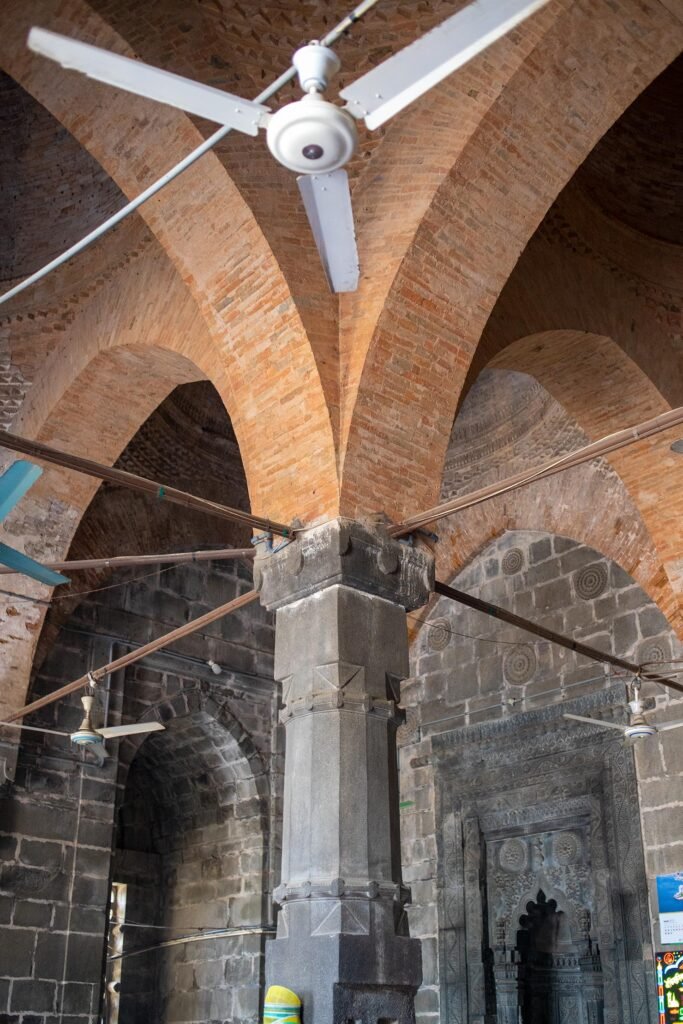
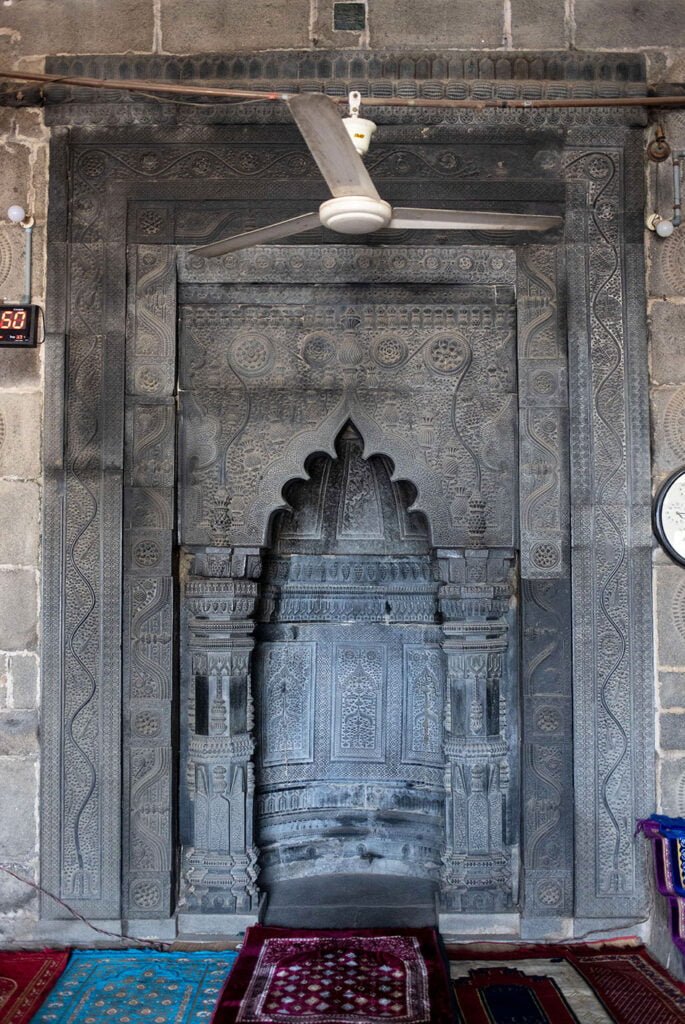
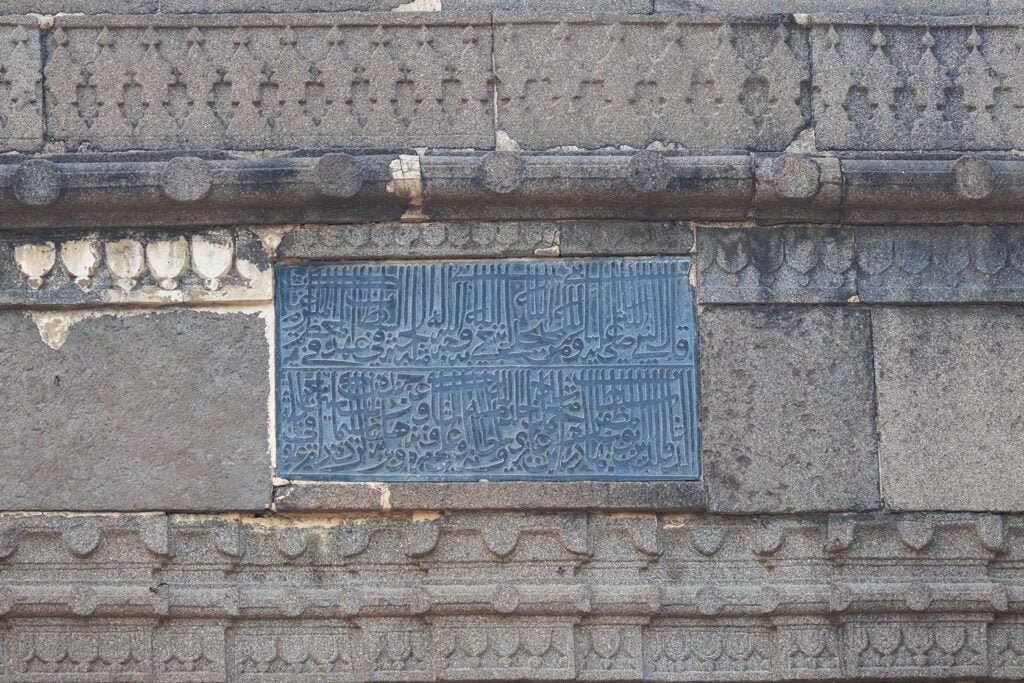
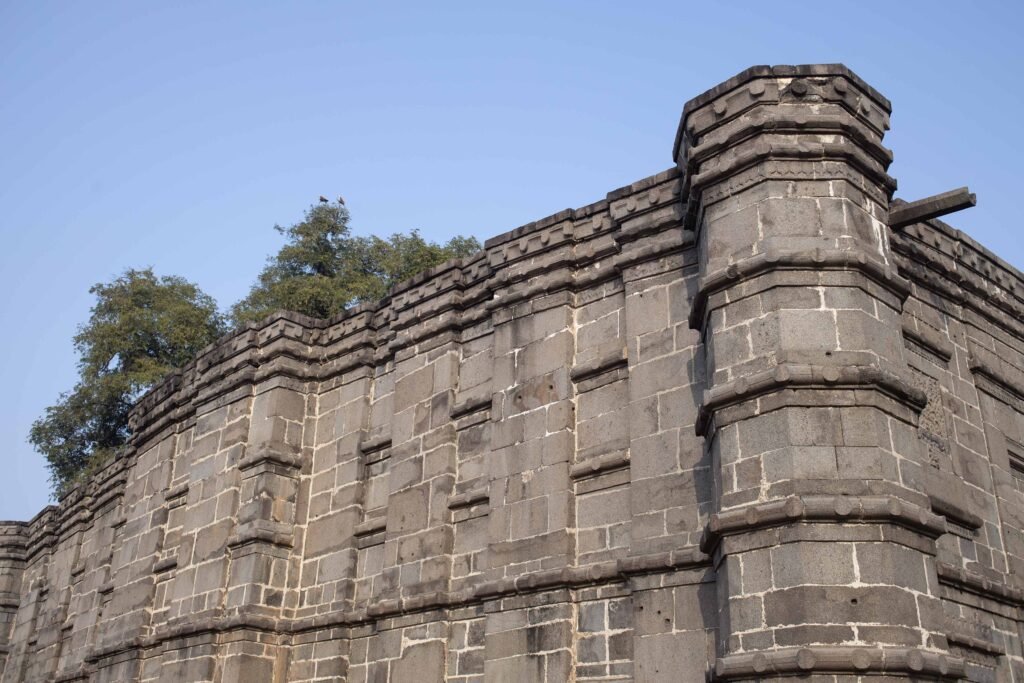
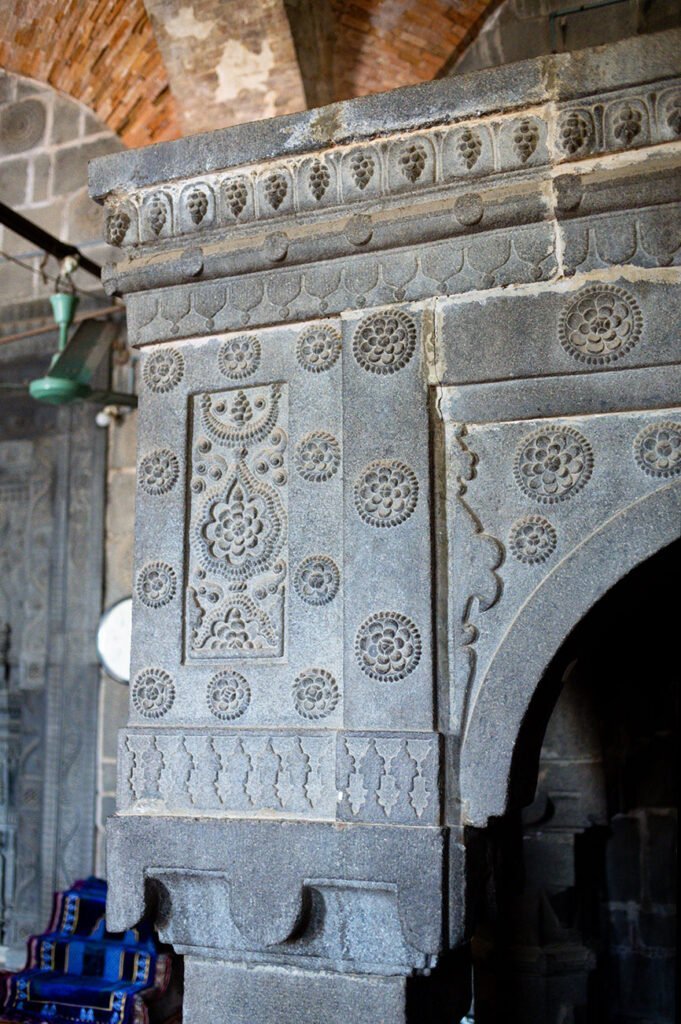
Folklore about Kusumba Mosque
Many locals in the area believe that angels constructed the mosque and the adjacent large pond (dighi) in a single night. A stone pillar, visible on paddy land a few meters south of the mosque, is linked to this legend. Despite the uncertainty of its truth, locals maintain that this pillar was used to move heavy stones during the mosque’s construction. A shopkeeper in the mosque area said that, the height of people during the construction of this mosque was 14 feet tall.
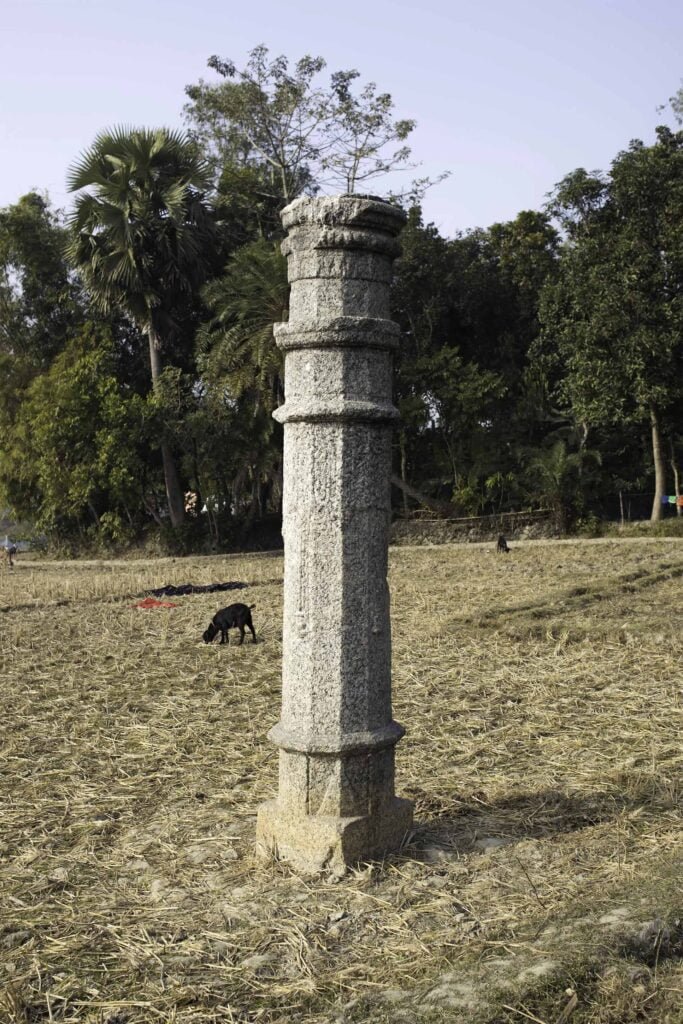


Kusumba Dighi
The Kusumba Mosque stands on the western side of a large pond, locally known as Kusumba Dighi. This pond measures 385 meters in length and 280 meters in width, covering a total land area of 25.83 acres. Worshipers use the Dighi for ablution and bathing purposes. A staircase from the mosque’s front yard provides access to the pond water. Subsequently, a separate staircase for women was constructed, located a few feet south of the mosque’s boundary wall.
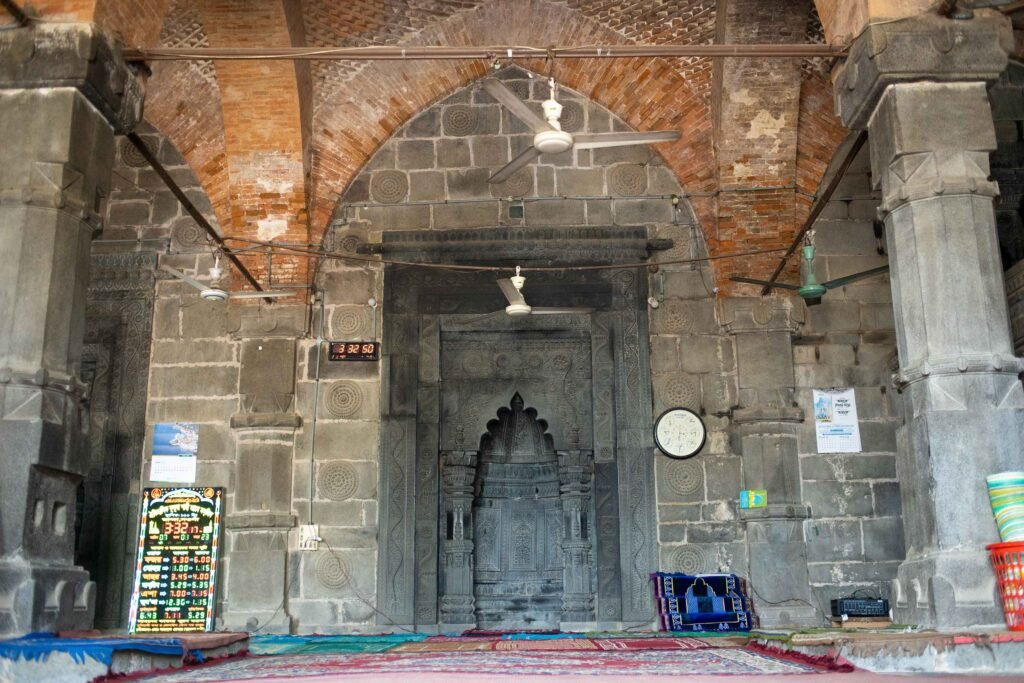
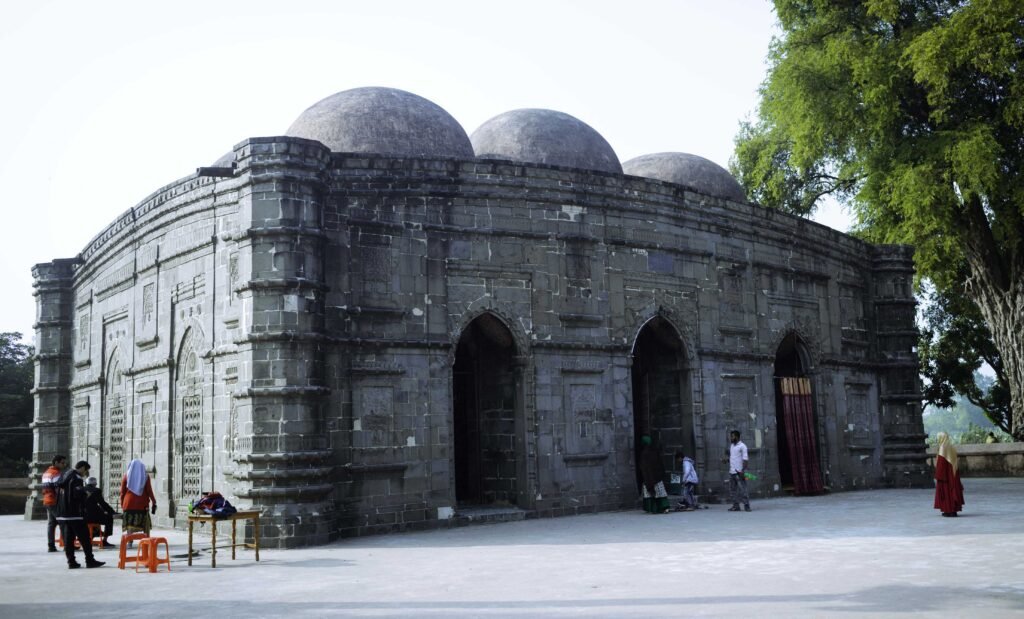

Women’s Prayer Place
An iron grill blocks the mosque’s north side door from the inside. A small space at the foot of this door specifically reserves a spot for women to pray. This small area can accommodate two to three women at a time. Curtains hang to maintain privacy, and with this intention, they hide this place from outside view. Moreover, like the others, this door has a beehive on top.
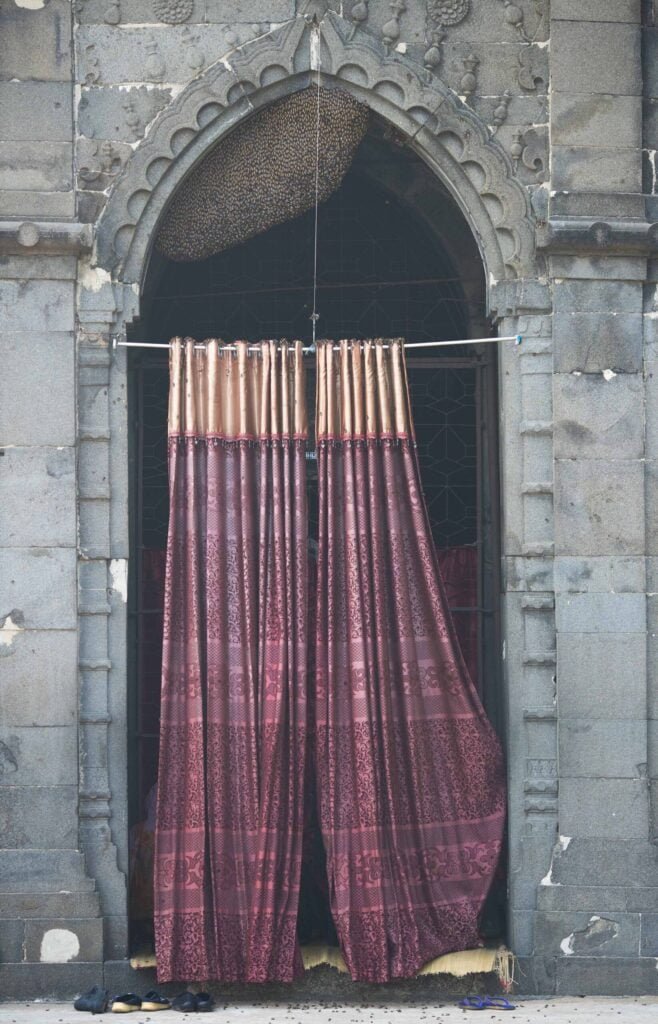

Ancient City
Historians believe that the surrounding area of today’s Kusumba Mosque was an ancient city. Its ancient name was Kaushambi. Mr. Carstairs, Collector of Rajshahi (probably the British era) visited the area adjacent to Kusumba Masjid. After the inspection, he submitted a report to the Divisional Commissioner of Rajshahi in April 1872. It is learned that Mr. Carstairs initially discovered a large area behind the Kusumba Mosque that was densely covered in vines and grass. But, however, this area was surrounded by a moat, giving it the appearance of a jungle. Upon further exploration, he noticed the remnants of a brick building, also encircled by a moat. Based on his observations, he commented that prominent Muslims once inhabited those buildings. (J.A.S.B, Part-1, 1904, pp-113-17). However, at present days, most of the area’s ponds and ditches have become filled up and transformed into cropland.

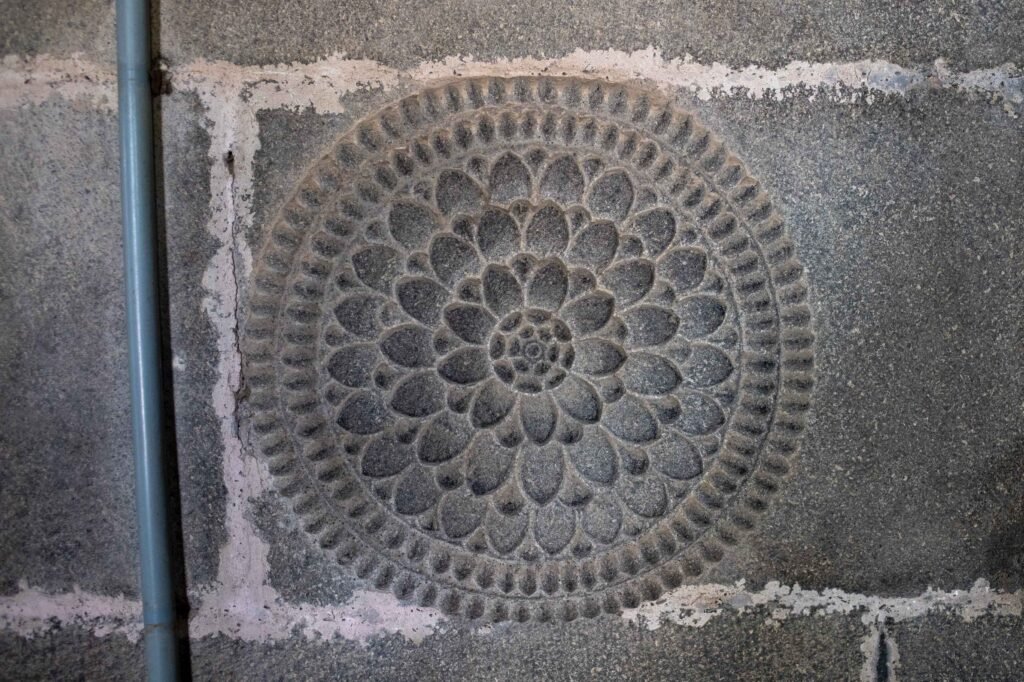
Beehive in the Mosque
Each of the mosque’s three doors features a beehive above it. Many dead bees litter the floor in front of the mosque, likely, crushed by human feet. Iman Ali Mandal, a local at the site, assures that the bees won’t bite unless provoked.
Maintenance and Present Situation
On Fridays, this mosque sees the highest number of both tourists and worshippers. They also hold prayers in the front courtyard to accommodate the congregation. Inside, the mosque can fit about 80 worshippers in four rows, while the front yard can hold approximately 700 worshippers.
Previously, a large open space lay to the south of the mosque. Now, a Madrasa occupies this area, located at the southernmost part of the site. It has enclosed the open spaces with walls, and as a result, this has reduced the open space in front of the historic mosque, thereby disturbing its original beauty.
The Directorate of Archeology, Government of Bangladesh, actively maintains the site. In addition, there is no entry fee to visit the mosque. The Department of Archaeology has taken various measures to enhance the beauty of the mosque area.
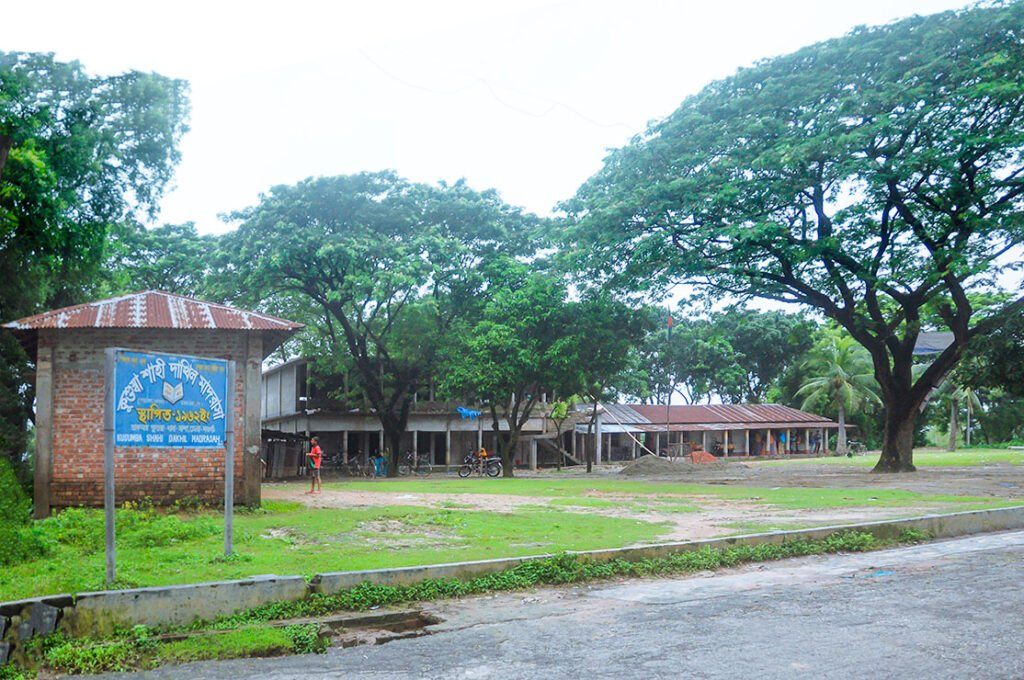
How to go Kusumba Mosque?
At first, you need to go to Naogaon, from anywhere in Bangladesh. It is located 33 km south-west of Naogaon town through the Naogaon Rajshahi Regional Highway. From Naogaon, take a bus at the Baludanga (Bengali: বালুডাঙ্গা) Central Bus Terminal, and then you’ll reach Kusumba Bazar in about 40 minutes. Once you get off at Kusumba Bazar, a short 5-7 minute walk through Kusumba Mosque Road will lead you straight to the Kusumba Mosque.
Visiting Hours, Accommodations and Food
The mosque is open to visitors every day of the week. But on Fridays there is a sufficient crowd of visitors and worshippers. Visitors can plan the tour keeping this in mind. While there are no accommodation facilities adjacent to this ancient site for tourists, hotels can be found in the nearby Manda Upazila and Naogaon town. For dining options, few restaurants are located in the Kusumba bazaar next to the mosque, offering only local food. However, for quality meals, Naogaon district town or the neighboring Rajshahi city would be best options.
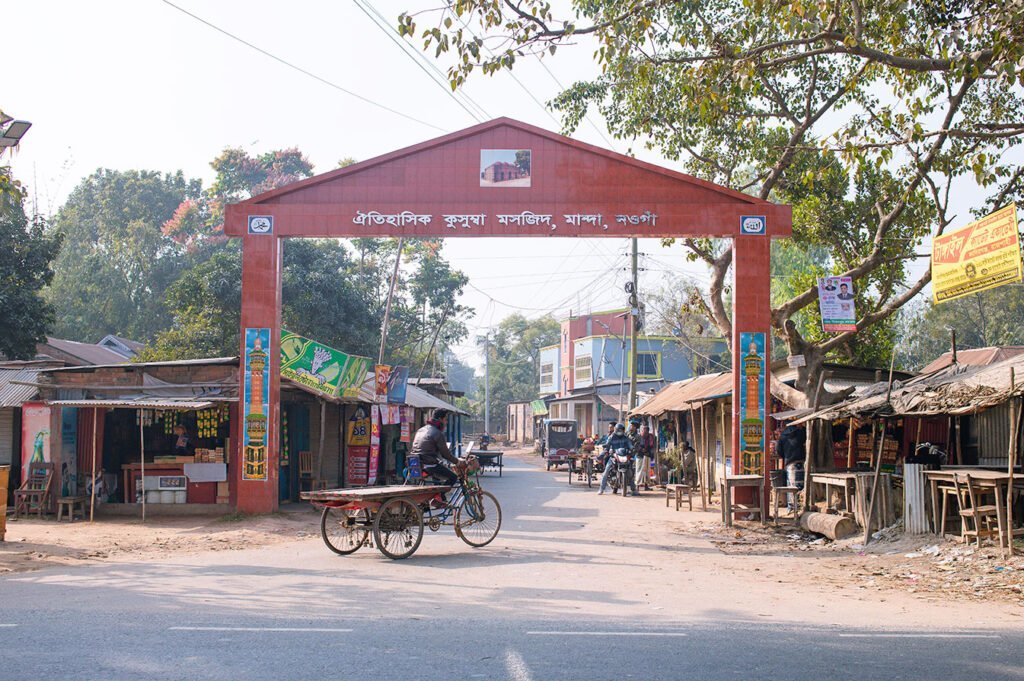
Google map
The map below labels the place as ‘Kusumba Masjid,’ because ‘Masjid’ (মসজিদ) is an established Bengali word for a mosque.
FAQs About Kusumba Mosque
What is the significance of Kusumba Mosque?
Kusumba Mosque, also known as Kusumba Shahi Mosque or ‘The Black Gem of Bengal’, is located in Kusumba village of Manda Upazila in the Naogaon district. It’s the second most important archaeological site in Naogaon district, after Somapura Mahavihara. The mosque’s image is also printed on the 5 taka note of Bangladesh.
Who built the Kusumba Mosque and when?
The mosque was built by a man named Sulaiman during the ruling period of Ghiyas-ud-din Bahadur Shah of the Shur dynasty in 966 Hijri or 1558-1559 AD.
What is unique about the construction style of Kusumba Mosque?
The mosque appears black from a distance and is covered with gray stone up to the pendentive arches on both the outer and inner walls, making it appear as a stone mosque. It has six domes, and the walls are impressively 6 feet thick.
Is there any folklore associated with the mosque?
Local folklore suggests that the mosque and the adjacent large pond were constructed in a single night by angels using a stone pillar to move heavy stones.
How can one visit Kusumba Mosque?
The mosque is located 34 km south-west of Naogaon town. From Naogaon, one can take a bus from the Baludanga Central Bus Terminal to Kusumba Bazar. A short walk from the bazar leads straight to the mosque.
Is there any fee to visit the mosque?
No, there is no entry fee to visit the mosque.
Is there a designated prayer space for women in the mosque?
Yes, there’s a very small space reserved for women. This place can accommodate two to three women at a time.
Photography: Rumon Anam



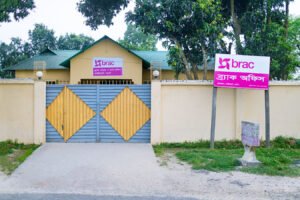


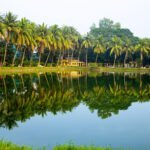



It's difficult to find educated people on this topic,
however, you sound like you know what you're talking about!
Thanks